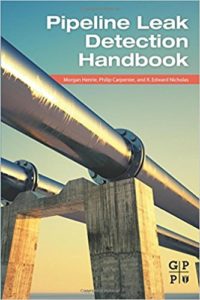Pipeline Leak Detection Handbook 1st Edition
Pipeline Leak Detection Handbook 1st Edition
Pipeline Leak Detection Handbook 1st Edition is an introduction to the problem of quickly detecting leaks, ruptures, and spills from commodities such as natural gas, liquefied natural gas, liquefied petroleum gas, refined petroleum products, and crude oil pipeline transportation systems. Pipelines as a whole, given the tremendous quantity of transported products, are perhaps the safest mode of commodity transport. However, unplanned commodity loss, due to breaches in pipeline integrity, does occur and is a very undesirable side effect of transporting fluids by pipeline. Many of these negative impacts may be severe in nature, ranging from unexpected system downtime to environmental damage, property damage, loss of company good will, loss of investor confidence, government fines, injury, and loss of life. Significant financial costs have occurred due to pipeline integrity breaches and resulting spills.
You can also Read Pipeline Integrity Assurance A Practical Approach
Pipeline Leak Detection Handbook 1st Edition Content
- Introduction
![Pipeline Leak Detection Handbook Pipeline Leak Detection Handbook]()
- Pipeline Leak Detection Basics
- Mass Balance Leak Detection
- Real-Time Transient Model–Based Leak Detection
- Statistical Processing and Leak Detection
- Rarefaction Wave and Deviation Alarm Systems
- External and Intermittent Leak Detection System Types
- Leak Detection System Infrastructure
- Leak Detection Performance, Testing, and Tuning
- Human Factor Considerations in Leak Detection
- Implementation and Installation of Pipeline Leak Detection Systems
- Regulatory Requirements
- Leak Detection and Risk-Based Integrity Management
Pipelines are in the business of transporting commodities that are dangerous, or valuable, or both. Unfortunately, accidents and incidents that involve breaches of integrity (ie, leaks and spills) do happen, and in certain locales, outright theft of the commodity itself can be a problem. It is in the interest of operators, regulators, and third parties to ensure that when such incidents occur, a rapid response on the part of the operator limits the damage by shutting down the pipeline operation, isolating the leak site (typically by closing pipeline valves) and dispatching response crews to the site to contain the damage and clean the site. Leak detection systems (LDSs) are a key component of this response.


Comments are closed.